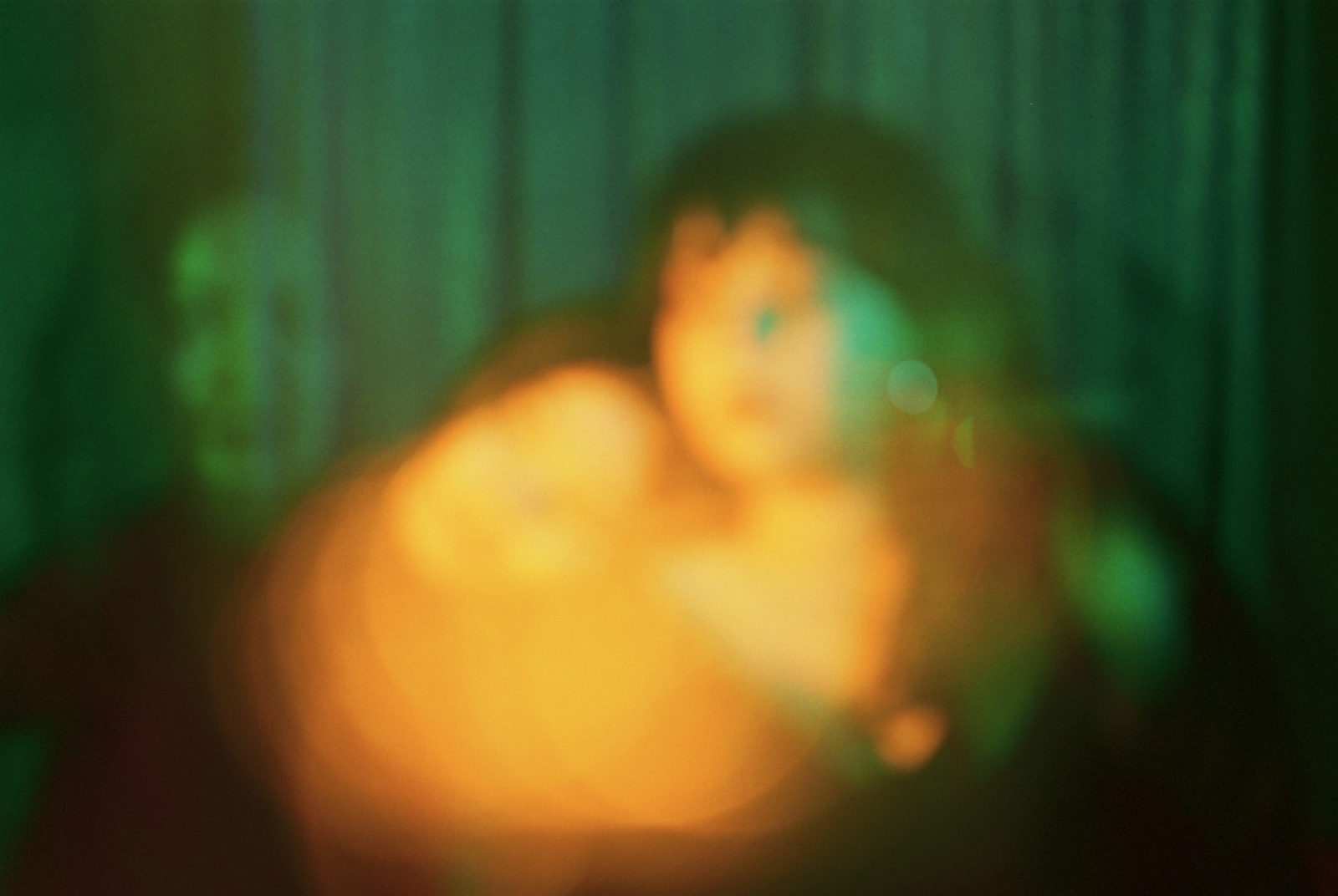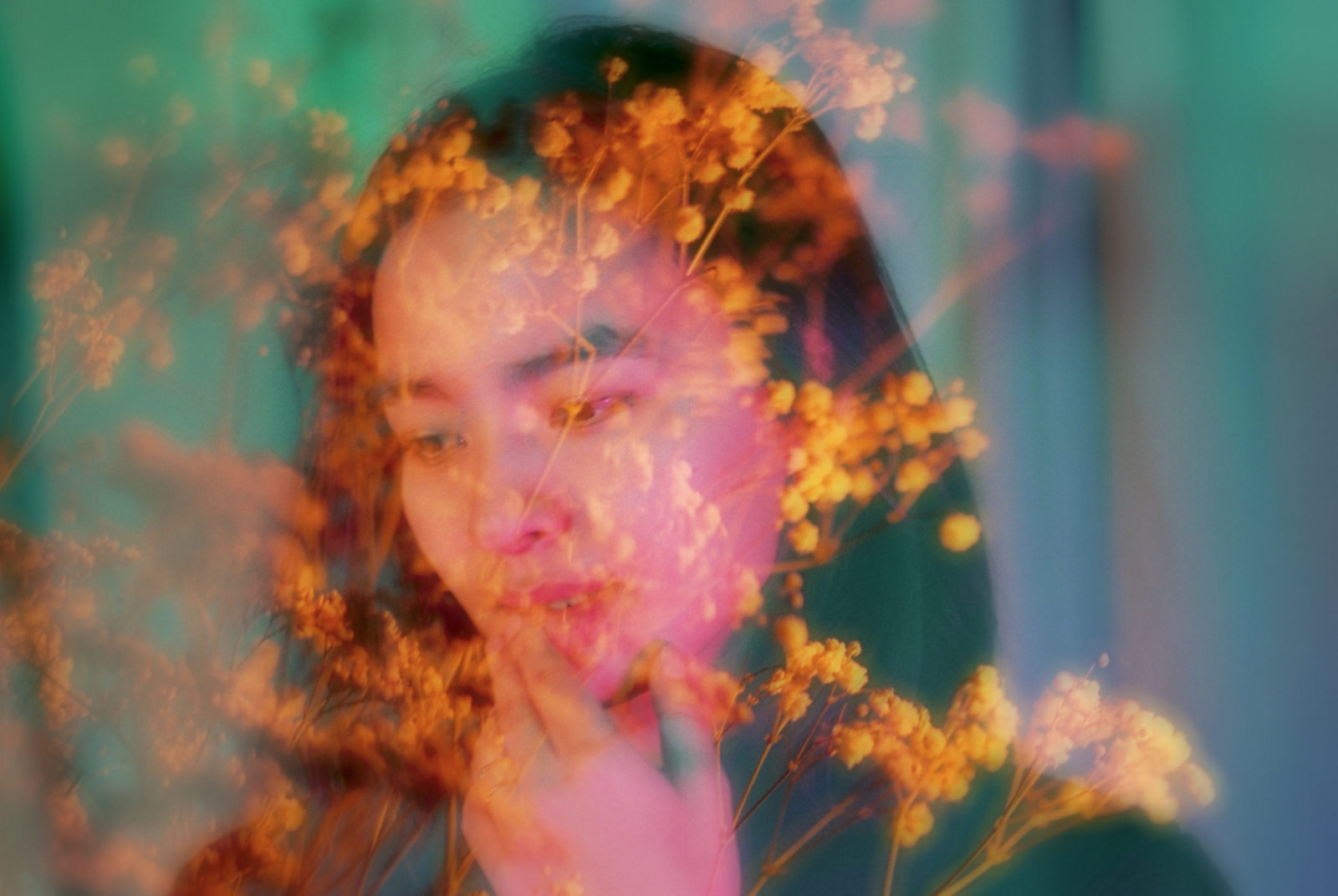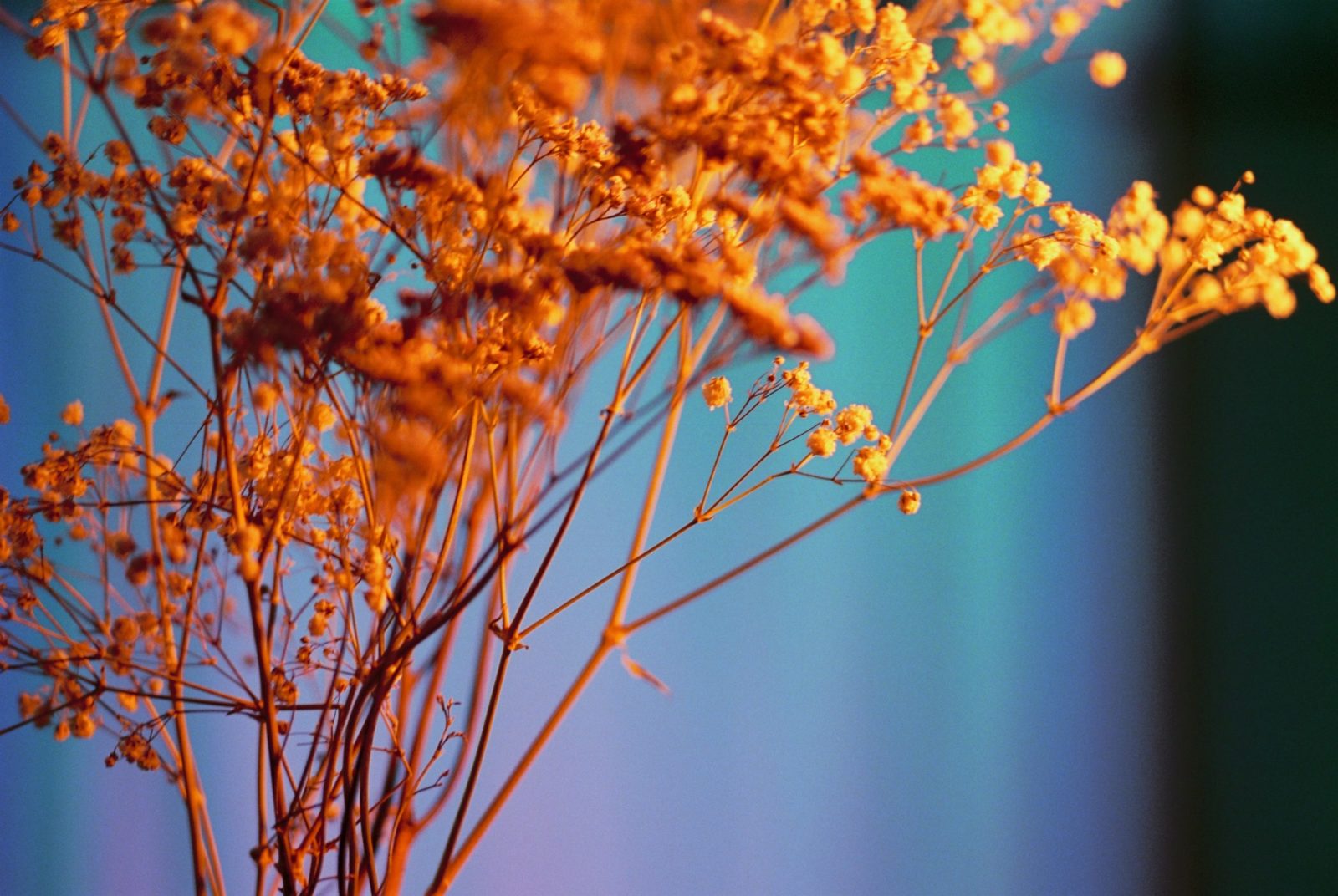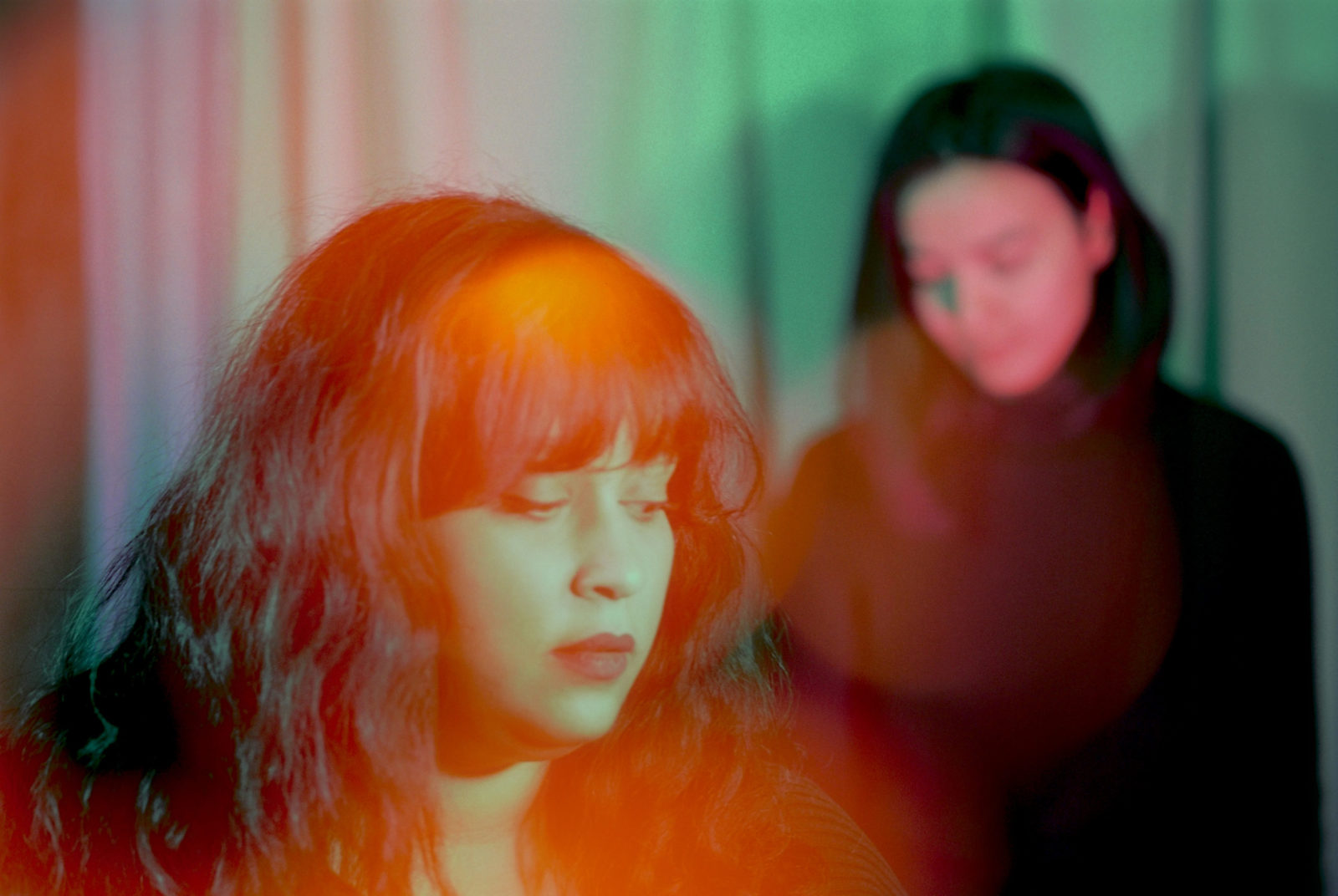Correspondence during an interlude

In spring 2020, when the coronavirus began to spread in the world and Lebanon entered into its first period of lockdown, Mashallah News co-founder and editor Jenny Gustafsson and her friend, landscape architect and urbanist Sarah Lily Yassine, started exchanging writings with each other. Their correspondence describes afternoon walks through a city with empty streets and closed shops, at a time when the protests of Lebanon’s October 17 revolution had become sporadic.
Sarah Lily – April 25, 12:35 pm
In the last months, Jenny and I have taken to the streets. Not to protest this time but to walk in the city, to simply move from place to place. And to forage medians, the act of collecting plants in the parcels that separate car lanes from one another. Jenny and I are neighbours – we live on the same road, the one that begins by the sea, becomes Phoenicia Street and then curls into Hourani Street. So when we agree to meet she literally comes downhill or I go uphill. The hill I’m talking about is Ras Beirut, or to speak like urban geographers, the Musaytibah hill.
On Easter Good Friday, we walked up to Makhoul Street in Hamra. There was a curfew that day, at 6 pm. We found an abandoned sofa under a rubber tree – Hevea brasiliensis, those magnetic trees that mark the streets around Hamra – and we sat on it. Five or six ladies had gathered at the gate of the church in front, praying from afar.
“Ah that’s why we are friends, she also records.”
Jenny dropped the plants we had gathered on the sofa and we walked over to the gate. She put down her phone to record the Easter chants. I thought to myself, “Ah that’s why we are friends, she also records.”
To the right of the church, on a nameless shortcut that connects to Sourati Street, an army jeep was parked with soldiers standing next to it. No one minded them; it was as if they weren’t there.
For me, since October 17 (and even before), people in uniform wearing guns evoke a feeling of unease.
At the corner, the pub window was semi-open and a few people stood outside drinking beer. A woman was jogging in the car park; people and animals (cats and birds) occupied the scarce street benches and any flat surface.
I said to Jenny: “A car park is a remnant of an old garden. Very often, in the center of a car park, you find an incredibly old tree. When developers buy several plots of land and group them to increase the buildable floor to area ratio, they destroy buildings and gardens. But they leave imposing trees for shading and with time these grow an even more imposing presence.”
Despite the new physical distancing, I feel that our neighbourhood has become more convivial. People are mixing in the street, the ultimate public space. Army guys, believers, the youngsters at the pub, lovers walking by, us, the plants and the cats.
Since October 17 (and even before), people in uniform wearing guns evoke a feeling of unease.
Only one car drove by, very slowly. The driver slowed down even further to listen to the chants and smile.
Already by the time we got to the church we had collected a bunch of plants: a cutting of – the white and yellow frangipani, my favourite flower – and some succulents, all stolen from the street to propagate on our balconies.
On Christmas two years ago someone dear to me came to a party I had organised with a bouquet of flowers: bird of paradise, red and white fountain grass (Pennisetum setaceum), white dahlias and other wild plants that he could not have found at the florist. When I asked him, he said: “I just collected them from the street.”

Jenny – 29 May, 6:18 pm
A number of years have passed, I think five or six, since you gifted me the book. It was summer, I remember because I took it to the sea (and because my birthday is at the end of summer). It now has torn edges, and the cover is soft from having been left in the sun and carried in a bag with clothes that were not yet dry. I like when this happens to books. Sometimes I stop in front of my bookshelf and take down a book, any book, to flip through its pages and see if there’s an old bill or ticket from a journey, or a business card from someone I met.
When you gave me the book, Sarah, you had already talked about it a lot. So had Gariné, our friend, I think you gifted it to her as well.
You had told me stories from the book during our walks in Beirut, through the familiar neighbourhoods around where we both live. Ein Mreisseh, the seaside stretch of land with a name I love for how it stacks “m” and “r”, two seemingly incompatible letters. Clemenceau and Kantari, inhabited by buildings with pale facades and quiet roads that all lead up to the Ras Beirut plateau. Zoukak el Blat and Zarif, the outliers where literal mansions hide behind overgrown trees. Hamra, the rather unattractive child that has so many past and current lives. Caracas, somehow connected to the open sky.
Maybe someone had dropped a leaf from their manoushe and it took root.
Sometimes we take the slope down at the end of Bliss Street, where the German School is locked behind a metal gate and the black and white Manara lighthouse neighbours other tall buildings. That road ends at the far end of the corniche, but before coming down you will without exception pass by one or two parked cars, their engines off and their windows only halfway down. This is where couples come to secretly meet on weekend afternoons (and by the way, taxi drivers stop to do what they need against a wall).
Did you see the portrait of Saad Hariri that was put up over the entrance of Luna Park on the other side of the Corniche? How it looks just like one of those giant clown faces at old tivolis, where you enter through the mouth?
One evening during the first lockdown, I guess one month into it or so, we were walking on Bliss Street you and me. We passed by Snack Faysal, which of course was closed. It’s strange to see these places that usually never close – Barbar or Uncle Deek on the Corniche – with their windows shut at 5 pm. A large pot had been placed on the pavement outside Faysal, originally home to a baby orange tree. When we looked down, we saw a literal invasion of mint in the pot. Maybe someone had dropped a leaf from their manoushe and it took root.
It was on that evening I believe that we ended up in front of the small church near Jeanne d’Arc Street. We didn’t pass by Adib and his The Little Bookshop on our way. I guess if we had, his yellow doors would’ve been shut too. Even stranger, because Adib is one of Hamra’s eternal nocturnals. A few years ago, when I lived in the same building, I often went down there in the evenings to sit and chat with him and anyone stopping by.
A few weeks later we walked by his street again, but the bookshop was still closed. Adib had put up small notes with poems on the tree outside (he usually keeps them in the bookshop, exchanging them from time to time). We took down Hafez’s Beautiful Hands, a poem about friendship, this most precious of things. You had your hands full with branches and plants so I put it in my bag.
I knew the book was for me when seeing the title, Happy City.
It was from Adib that you bought the book. I think you inspired him to read it as well (I saw it at some point in the pile of books he always has on his table, ones that he is halfway through). I knew the book was for me when seeing the title, Happy City.
I am someone who is always happy in cities.
Me, the granddaughter of farmers, the child of a quiet village surrounded by northern fields and forests. With a grandfather who loved his cows, a grandmother who loved her garden and a mother who spent her childhood summers in the potato fields (until she got bored, quickly, and escaped from the chores).
I am happy in the company of sounds and movement and strangers. That’s a strange word by the way, because they are not strange. In Arabic the words are the same too, but not in Swedish. A främling is someone you don’t know, but not someone who is strange.
I know many people have been glad to spend the lockdown in their villages with nature outside their front doors. I imagine that is beautiful. But I have been happy in the company of Beirut.
That is how, during our walks, I came to think about that book and happiness in the city.

Sarah Lily – 2 May, 01:18 am
That day, I finally left the house at around 2:15 pm.
I knew that the march group was coming from Bechara el Khoury, so I decided to walk up the hill. I mapped it mentally: ascend Kantari, take the stairs down Parliament Hill, cross the Ring Road underpass, pass by Zaroub el Haramiyeh in Khandak el Ghamiq and meet the protest at the massive Ficus religiosa trees near Falafel Sahyoun by the former Debbas Square.
I had barely arrived at Kantari when I heard the protest coming from the seaside. I recognised voices. Distinct voices of strangers that I had been recording for the past six months. The guy who is always losing his voice. I’ve seen him every day for months, observing him alternate Che Guevara T-shirts: one black, one red. I think his name is Abbas.
I’ve seen him every day for months, observing him alternate Che Guevara T-shirts.
Riot police outnumbered us. I tried to keep a distance – I am scared of getting the virus. Another group arrived through the Ring tunnel, we met at the crossroad of Kantari and Michel Chiha Street, which later becomes Central Bank Street and then Hamra Street.
We all chanted, Thuwar ahrar han kamel el meshwar – “Free revolutionaries, we will keep going”, my favourite chant. Drivers honked in support and we shifted to, Zammer, zammer, zaamer, iza ma el thawra zammer – “Honk, honk, honk if you’re with the revolution”.
I recognised more eyes, hair and outfits, despite the masked lips and noses. I wondered if I should say hello. I walked with the group towards the Central Bank and did the usual: check out the protest, understand who is there, test the level of anger in the air, listen to which chants are dominating. I wondered who was coming from where in the city. Had they all come walking like me?
Check out the protest, understand who is there, test the level of anger in the air.
Revolution aside, I looked at the plants growing in front of the Ministry of Tourism. Red arrowwood dying, some succulents, also dying. Should I forage these as well?
Jenny arrived and we moved towards the former Dar Bistro at Wardieh, a cafe that once was our headquarters but closed permanently during the lockdown. Some people in the march were getting agitated; they turned over a garbage bin, some photographers climbed into a semi-abandoned 1930s house and stood on the edge of its balcony overlooking the street to take photos. I wanted to tell them that it is the first time I see humans on this balcony, but I didn’t.
We decided to walk to Martyrs’ Square. On the way we stopped at a grocery store to get a drink. I looked in the fridge and saw very small bottles of beer, I bought one and planned to drink it while walking to the square. I thought to myself, I drink publicly to claim a secular street, I drink publicly to assert my atheist identity.
We ended up walking along a few younger boys who were at the Central Bank before. A soldier told us we could not pass, but I just ignored him and yelled: “Just continue walking, this our street, it’s a public domain, he can’t stop us. Revolution.”
I felt that I owned the city.
I remember hanging out in the streets of Beirut in the nineties as a teenager. Walking on Hamra Street, visiting squatter friends at Khandak el Ghamiq and Sagesse, laying on the ground by the gate of the Saint Georges hotel during a rave party and watching the sky, because we were not allowed in at the time. Me with blue lipstick, blue mascara, blue hair streaks and a nose ring, my friends walking barefoot past midnight.
We owned the city, and I felt that I owned it again at that moment.
I remember hanging out in the streets of Beirut in the nineties as a teenager.
Many have written about reclaiming public space during the revolution. But what I’ve noticed now is much more radical: occupation and ownership. Equality in using the streets to express happiness and anger during the revolution. Equality to breathe during the lockdown.
We walked back through the Santiyeh cemetery; the gate was open and we sneaked in. I had been here with two lovers, five years apart, but never inside. I told Jenny that my great grandfather was buried in the original cemetery. It had been washed away in the ill economic and political narrative that dominated urbanism in the post-war era in Beirut. At that time, the shoreline was dredged and reshaped to allow for real estate operations by Solidere, a development company for the reconstruction of Beirut’s historic core.
There was no one there so we lay down on the ground next to a dozen nameless granite tombstones. We continued speaking about teenage years, politics, family roles and love. We started picking from the flowers and weeds growing in the cemetery and decided to come back and design an installation. But that is for another time.

Jenny – 1 June, 00.20 am
One afternoon, the first Sunday of the lockdown when all cars were banned from the streets, I saw a dad and his daughter in a princess dress biking in the middle of the Ring Road one afternoon.
I saw a girl as well, walking tightrope on a wall covered in graffiti on Martyrs’ Square, holding on to her mum with one hand.
I saw a dad and his daughter in a princess dress biking in the middle of the Ring Road one afternoon.
There are lots of people in the city on their bikes these days, criss-crossing empty parking lots and driving in the middle of silent streets, riding anywhere that’s usually reserved for cars.
There are even teenagers out walking with their parents!
In Happy City, one chapter speaks about how cars came to dominate the urban environment. How roads became domains for cars and only cars, with no room for other vehicles or walkers. How cities started to accommodate for them: expanding parking spots, prioritising highways over other land use, connecting areas through roads instead of paths. How did all of this happen, and so fast?
Yes, like you said, the current transformation of downtown and Martyrs’ Square began during the revolution. That’s when cars disappeared and walkers appeared. Roads leading to downtown were closed for traffic so people started walking. One of these roads passes right by my street: now, it was suddenly busy with people, flags in their hands and family members in tow, walking either to or from demonstrations.
How did all of this happen, and so fast?
There’s a church at the intersection of that road and the one leading down to the Corniche. It has a small square outside, where skateboarders began coming.
One day when we were out walking, Sarah, some of them were there. It made both of us remember teenage crushes and beautiful friendships – a time when you would just go out, no plans or fixed ideas, no phones or internet of course, just out for endless afternoons and evenings. It seemed like time extended into the future with a slower pace back then.
But of course, it is not time that is moving fast, it is life.
Inner migration was produced as part of the 2020-2021 Switch Perspective project, supported by GIZ. All illustrations by Aude Nasr.






